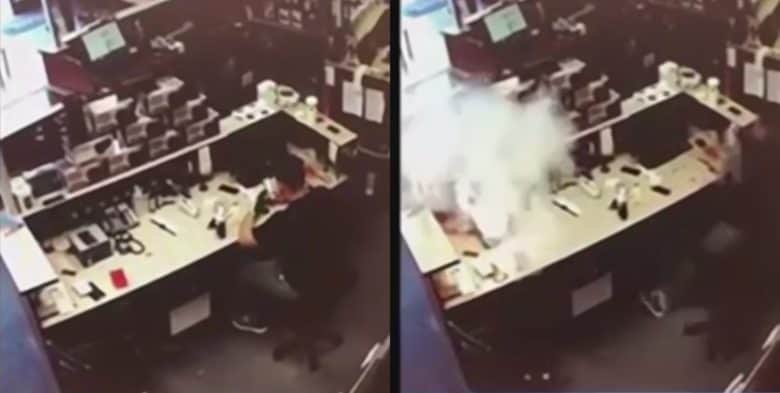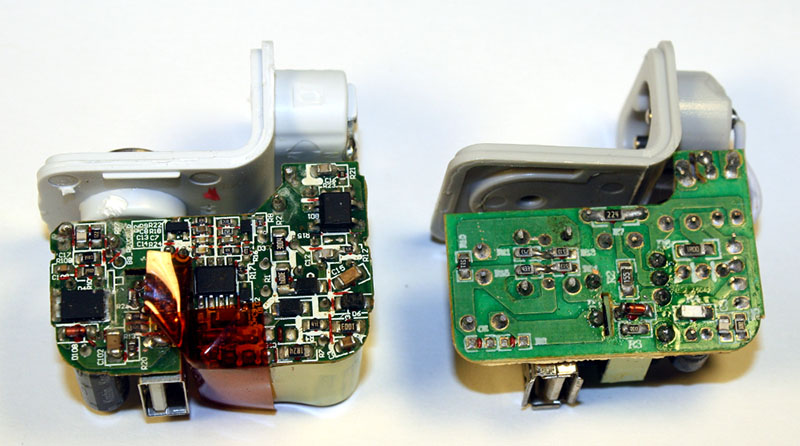Help, smoke is coming out!
‘iPhone explodes in Dutch handbag’
In the past, you regularly came across stories about exploded iPhones in the media and on social media. Sometimes it comes very close: in 2009, the Dutch iPhone user ‘Floppie’ reported that his iPhone had exploded on vacation. The iPhone was stowed in a handbag, which was in the shade. Two minutes later, the iPhone was little more than a smoldering block. The device was scalding hot. A more recent story is that of the Dutchman Ron Barten from Brabant, who suddenly saw smoke coming out of his iPhone in 2018. How is that possible? And to what extent is there an explosion or explosion? In this article we tell you how it is and how you can notice that your iPhone is about to burst.
- Explosion or not?
- Recalls
- iPhone incidents
- Causes
- You should pay attention to this
Ed Bindels, CEO of Amac says:
At Amac, we repair many tens of thousands of Apple devices every year and a battery problem is rare these days – let alone an actual explosion. What we sometimes see is products that burst open (due to the expansion of the battery) – not infrequently after ‘alternative’ repairs such as non-official batteries, screens, etc. Of course, any form of warranty will also expire. That is why we are extra alert if we suspect it. For example, alternative screens regularly break when opening an iPhone.
An “iPhone explosion” is often not an explosion
When you think of an explosion, you quickly think of flying debris and fireballs flying around your ears, as in the photos below. But it’s usually not that spectacular. In most cases, the device has burn marks or there has been smoke development, without there really being an explosion. The iPhone can look quite battered afterwards, with black spots and melted parts.

The chance that you will be hit by an exploding iPhone is very small. This is evident from the fact that since the iPhone came on the market in 2007, only two Dutch ‘explosion cases’ have been in the news. You rarely or never hear about it worldwide, even though there are more than 2 billion iOS devices in circulation. If it does happen, such an explosion case will receive a lot of attention in the mainstream newspapers. It produces beautiful photos of half-charred iPhones and distressed-looking victims, who seek publicity in the hope that Apple will reimburse the iPhone.
Don’t get us wrong: overheating an iPhone in your pocket can be dangerous. Such a smoldering iPhone can cause burns and you can get seriously injured. An iPhone can also cause a fire in the house if the device is in a place with flammable material such as wood and oil tanks. However, the chance of this happening is very small and stories in the media are often exaggerated to make it extra exciting. An ‘explosion’ is often no more than a plume of smoke.
In most cases, the cause is a battery problem. Unfortunately, this is something Apple can’t do much about, other than making the batteries safer and making sure the device can’t get too hot. Battery cells can bulge over time or overheat due to the use of a faulty plug. Approved chargers such as those with MFi certificate are protected against overheating.
Recalls
‘Explosion’ also occurs in other electrical appliances. For example, the Senseo coffee makers suffered from ‘explosions’ at one point. This was caused by a faulty boiler, which could ‘explode’ if the device had become heavily calcified. Tens of millions of units of these devices have been sold and the chance of exploding was 3 in 1,000,000. There was one incident in the Netherlands in which the Senseo ‘exploded’ in the victim’s face. Philips recalled no less than 6 million Senseo devices to descale them free of charge, while the company could also have sent descaling bags to users. Few people will remember this incident or still feel unsafe when they make their daily cup of coffee. At Apple, these types of incidents linger longer and that may be because everyone has had experiences with a power adapter or device that gets very hot during charging.
The crucial part here is the battery. In most cases where a smartphone catches fire or melts, the battery is the cause. Under certain circumstances, any Lithium-Ion battery can ignite or melt, even if the battery meets all the guidelines.
Our advice is to take good care of yourself. If you hear strange hissing sounds coming from a device or if it gets very hot, unplug it and make sure you put the device in a safe place, for example outside in the garden (if it’s not raining).
A recall will only occur if the battery is incorrectly designed or has a manufacturing defect. This happened with the Samsung battery scandal in 2016, but has not yet happened with iPhones.
Should You Worry About Exploding iPhones? Probably not, but you should be careful to step back from unusual behavior to avoid hurting yourself.
The Samsung case
The fear of exploding iPhones has increased after Samsung made the news in 2016 with battery problems with the Galaxy Note 7. This device led to so many incidents that the aviation authorities imposed a ban. It was no longer allowed to take the Note 7 on a plane. Samsung resolved the issue, but the no-fly zone remained in effect. In this case, there were two production problems with the battery, which caused a short circuit and overheating of the devices. Sometimes this resulted in burn marks and a fire hazard, but there have never been spectacular explosions with debris lying around. It has led to the fact that nowadays you are not allowed to take large batteries in your hold luggage and that you must immediately warn the cabin crew if smoke develops. The immediate reason for this was this Samsung case.
So why do iPhones ‘explode’?
Smoldering iPhones and smoking batteries are usually caused by:
- Manufacturing defect: A hardware defect can cause a short circuit, causing the battery to overheat. This was the case with the Samsung Galaxy Note 7.
- Overheating: The iPhone works best in temperatures below 45 degrees Celsius. If the iPhone remains above that temperature for an extended period of time, the internal hardware may be damaged. A temperature warning will then usually appear on the screen, advising you to let the phone cool down. A case that doesn’t dissipate heat properly can cause your device to overheat more quickly. The iPhone has an internal security that, for example, automatically stops music playback and puts the device in airplane mode.
- Excessive pressure on the battery: If an iPhone is bent, for example because you have sat on it, the battery can become under pressure. As a result, problems occur faster.
- Poor accessories: If you use poor quality accessories, the protection against overheating is less well organised. Your iPhone may become very hot while charging or the power adapter may catch fire and melt. We have written several times on iCulture about the differences between approved chargers and “>cheap chargers that can damage your iPhone. There is actually a difference between good quality and bad chargers. The Dutch Food and Consumer Product Safety Authority also warns against poor quality chargers. Of course, if your house burned down because you used a cheap charger from AliExpress, it’s hard to blame Apple. If you find Apple’s official chargers too expensive, you can use cheaper brands with a good reputation, such as those from IKEA, Anker or the Amazon house brand uGREEN.
Below you can see that an official iPad charger (left) has much more technology on board than a counterfeit charger (right, more info):

You should pay attention to this
Sometimes a battery problem occurs right after purchase, as was the case with Ron Barten. It is likely that something went wrong during the production or assembly of that specific device. It does not always mean that the entire production batch is affected. For other people, the problems only occur later, when the battery gets older or when the device has been under a lot of pressure.
This is how you know if something is wrong:
- There is a hissing sound coming from the battery.
- The iPhone gets very hot and does not cool down very quickly.
- The iPhone is bent, for example because you sat on it.
- The battery is swollen or has a bump. As a result, the housing can open with a crack (this mainly occurs with the Apple Watch, Apple has an official repair program for this).

If you suffer from the above symptoms, do not just charge your device. Have it looked at first. Contact Apple, check whether your iPhone warranty is still valid and whether you are entitled to a free iPhone repair.















